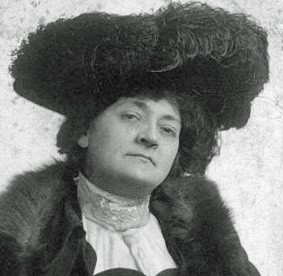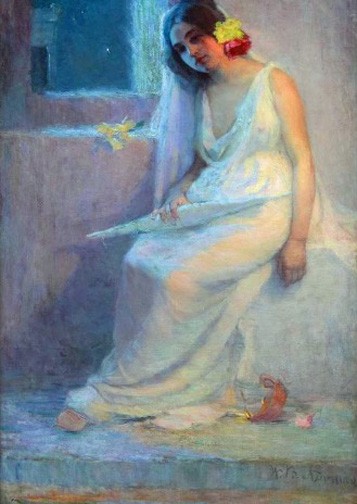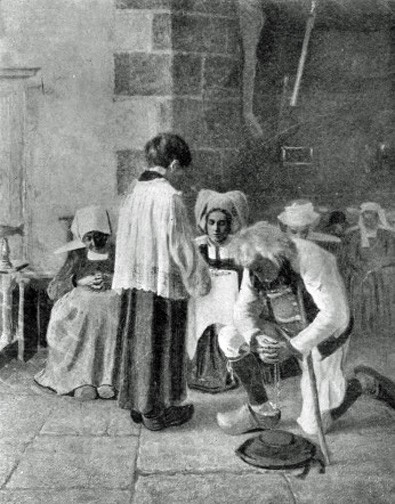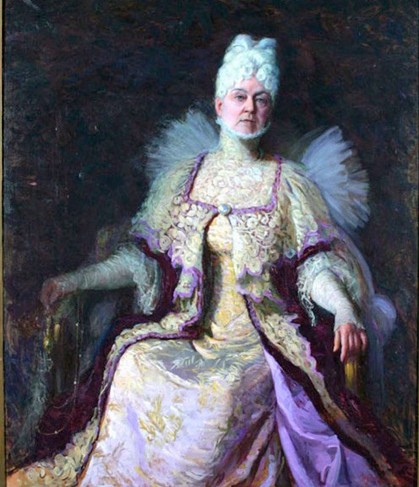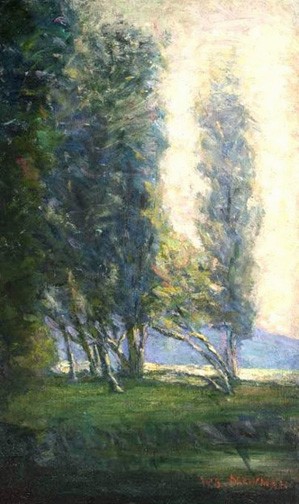Willie Betty Newman, 1863 – 1935
Willie Betty Newman was born on January 21, 1863 on a Southern plantation during the Civil War. Her father, William Francis Betty, was a colonel in the Confederate Army, while her mother's family, the Ruckers, owned the Maple Grove Plantation and its 200 enslaved people near Murfreesboro, Tennessee. Unlike other Southern artists who later denounced the evils of slavery, Newman never publicly acknowledged the darker side of her family's history, and her career was built on elaborate society portraits of prominent Southerners, many of whom were former Confederates. Newman was highly praised in an 1897 article published in Confederate Veteran, a journal dedicated to honoring those who had fought for the South: "To find among us a daughter of Tennessee who has achieved so much in so short a time and is possessed of so high a degree of power, awakens in our hearts not only admiration, but a feeling of patriotic pride and a desire to assist her in achieving all that her high endowments promise [...]" (87).
Newman was educated at Soule College and Greenwood Seminary, both in Tennessee, before studying at the Art Academy of Cincinnati, led by Thomas Satterwhite Noble. Her Cincinnati studies were to have lasted three years but Newman flew through these courses, finishing in just nineteen months and earning a scholarship to study in Paris. Her 1881 marriage to Virginia pharmacist J. Warren Newman produced one son, but the couple separated shortly after their wedding, for reasons unknown, and their child was raised by relatives (Watters).
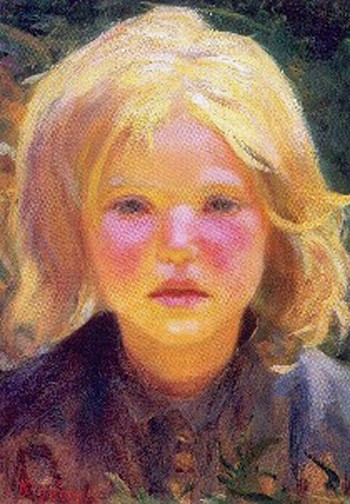
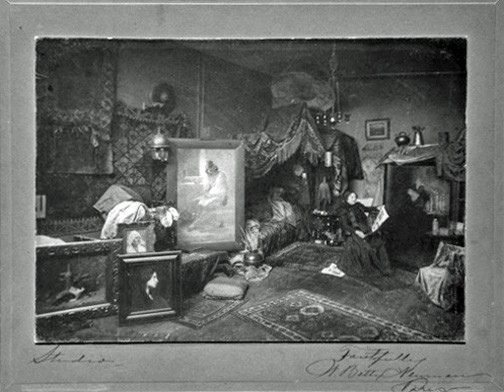
Unfettered from her responsibilities as a wife and mother, she traveled to Paris around 1890, living at 4 rue de Chevreuse when the Club opened in 1893, and studying at Académie Julian under William-Adolphe Bouguereau, Benjamin Constant, Jean-Paul Laurens, and Jules-Joseph Lefebvre. Newman exhibited nearly every year at the Salon des artistes français from 1891 to 1901; much of her work in this period was influenced by Impressionism, particularly the style of Claude Monet, as well as the Barbizon painters Rousseau and Millet (Grogan 394). The Illustrated American from June 13, 1896 recounts an interesting anecdote about Newman’s struggles as an artist:
Mrs. W.B. Newman is to the fore with a good female figure, but was most unfortunate in being unable to exhibit a very important picture. It is more than an ordinary trial for an artist to have her model seized by the police at the eleventh hour, and to be forbidden to exhibit the picture here or in America. All models being required to give notice to the police of their intention to pose, this one may have neglected it, or it may all have been a ruse in order to blackmail a despairing artist at the last minute (799).
Newman spent long periods of time among the peasants of Brittany and Normandy, inspiring nearly all of her Salon paintings. In 1894, she exhibited a work entitled, "Marée montante, Port Blanc (Finistère)" at the Exposition de Versailles (July 3-September 30). Volume 12 of American Art Annual noted that in 1915 the Centennial Club of Nashville purchased her painting of a religious service in the church of the village of St. David in Brittany, "Passing the Holy Bread," (213). It was considered by many critics to be her masterpiece, documenting a traditional ritual that has long since disappeared. Newman worked on the painting for nine months, “living a peasant’s life, even to the wearing of the wooden shoes and short skirts” (Rice 565). It is unclear when the painting was finished but it was exhibited at the Philadelphia Museum of Art in 1892 and at the Salon des artistes français in 1894.
The 1896 Indicateur guide to artists in Paris erroneously lists Willie Betty Newman as Mr. W.B. Newmann. In addition to misspelling her last name, the guide clearly believes her to be a male artist, which would have been impossible since the Girls' Art Club was exclusively a residence for women. Scholars have noted that Newman often signed her paintings simply "W.B. Newman" in order to pass as a male artist, meaning the Indicateur's author was not the only one fooled into believing that her accomplished canvases were produced by a man (Watters).
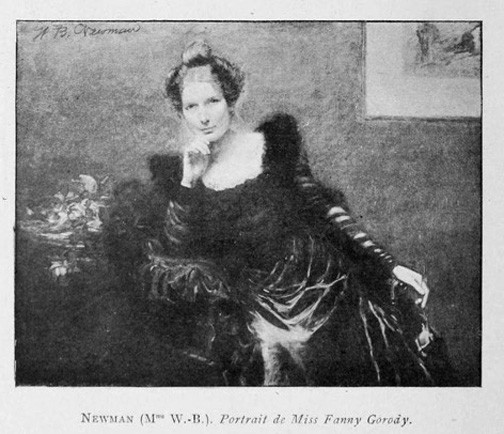
Reviews by Arsène Alexandre for Le Figaro and Katherine De Forest for Harper’s Bazaar of the 1899 American Woman’s Art Association exhibition both name Mrs. Newman as one of the show’s standout artists. She received many accolades during her long and successful career, including an honorable mention at the 1900 Salon des artistes français for her portrait of Fanny Gowdy, daughter of American Consul John K. Gowdy (great friend to the Girls' Art Club). Newman was the first Tennessean to be so recognized and John B. Longman wrote about her success: “One of the evidences of the great freedom of modern times is illustrated in the way women are coming to the front in art” (13). That same year, she was also invited to represent the United States at the Exposition universelle at the Grand Palais, where she exhibited her painting “Reverie.” Newman was awarded the Académie Julian medal of 1903 for her drawing of a nude, and was awarded the only medal ever given by the Nashville Art Club in 1910. In an August 1903 article for The Olympian, Libbie Luttrell Morrow sums up Newman’s artistic talent: “Splendid draughtsmanship, excellence in coloring and a marvelous handling of light and shade, are characteristic of Mrs. Newman’s work” (134).
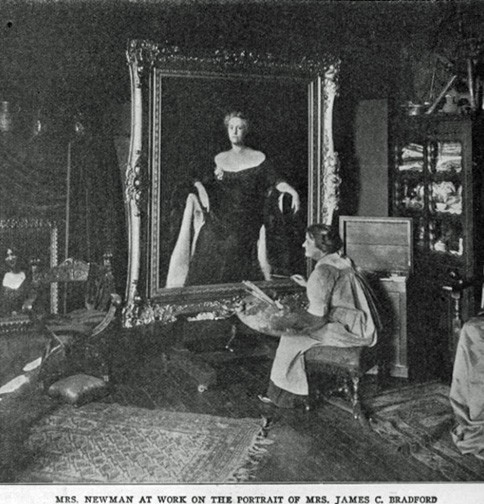
After nearly twelve years in France with occasional visits to Italy and Holland, Newman returned to Tennessee in June 1902 because an accident in her French apartment left her unable to paint: “[...] she became asphyxiated by the poisonous gas escaping from the stove in her studio and lay ill for months” (The Nashville American 7). Back in Nashville, she established her own studio and briefly ran the Newman School of Art, hoping that French academy methods might appeal to an American clientele (they did not). In a 1906 issue of Bob Taylor’s Magazine, Newman's radical plan to establish "a permanent, endowed municipal institution for free instruction in constructive art based on living principles" was highly praised (568). A parallel publication, The Taylor-Trotwood Magazine, also wrote about Newman’s goals: “Mrs. Newman feels that the South is far better fitted to become the home of art in America than any part of the country, and it is a darling scheme in her heart to make this section pre-eminently the center” (355).
Though her art school opened to much fanfare in Nashville, it was too difficult as a woman artist and entrepreneur for her to sustain this ambitious enterprise, not least because her classes were free. Thus, in order to remain self-sufficient, Newman focused exclusively on portraiture, and her long list of commissions enabled her to live comfortably while safeguarding her independence. Newman’s keen eye for lighting, composition, and her ability to capture the grandeur and gravitas prized by her Southern sitters led to major commissions from politicians James B. Frazier, Ben W. Hooper, and John P. Buchanan, journalist John Trotwood Moore, and businessman James Erwin Caldwell. She also painted the posthumous portraits of President James K. Polk and congressman John C. Bell for the United States Capitol.
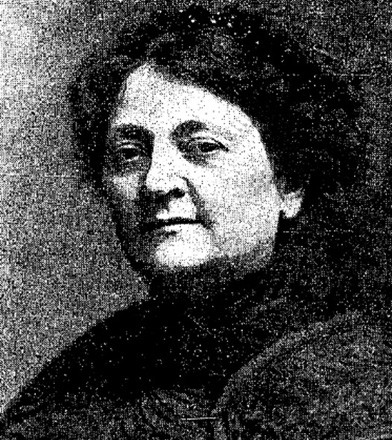
Newman continued to exhibit in the United States, including a fifty-four work show mostly from her time in France at the Strauss Studio in St. Louis in 1903. She also served for a time on the executive committee of the Nashville Art Association. In a 1906 letter to the editor published in The Nashville American, she outlined her philosophy on art and her dedication to establishing the city as a global art center: “Art is by no means restricted to picture painting or something to hang on the wall. Art is the foundation of our civilization, the rock upon which we build. Art dignifies labor. So let us help make dear Nashville the biggest, greatest, and wealthiest city in the South” (September 1, 1906, 5).
Newman never remarried, despite persistent rumors that she was engaged to Hungarian sculptor George Zolnay. And, unlike her fellow Southern artist and Girls’ Club alumna Anne Goldthwaite, Willie Betty Newman did not embrace progressive causes like women’s suffrage in the early twentieth century. In the last years of her life, presumably because of failing health, Newman stopped painting. She died in Nashville in February 1935.
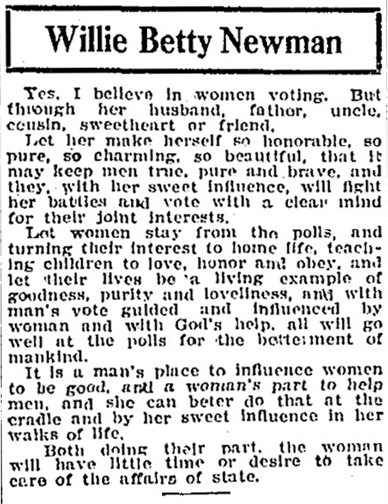
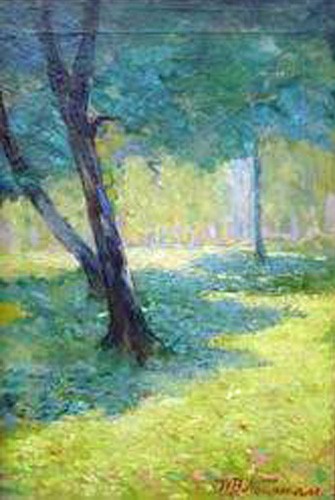
Sources
- Alexandre, Arsène. "Les Chevreuses." Le Figaro, December 11, 1899, pp. 5-6. RetroNews.
- American Art Annual, 1914-1915. edited by Florence N. Levy. Volume 12, New York: American Art Annual, Inc., 1915. Google Books.
- “Art.” The Index, vol. 16, no. 21, November 24, 1906, p. 23. Google Books.
- “Artists to Be Married: Engagement of G.J. Zolnay, the Sculptor, and Mrs. W.B. Newman, the Painter.” New York-Tribune, January 10, 1898, p. 7. ProQuest Historical Newspapers.
- Betty Family Papers, 1835-1935. Tennessee State Library and Archives.
- De Forest, Katharine. "An Art Tea at the Paris Girls' Club." Harper's Bazaar, vol. 33, no. 2, Jan 13, 1900, p. 33. ProQuest.
- Grogan, Kevin. “Newman, Willie Betty.” The New Encyclopedia of Southern Culture, volume 21: Art and Architecture. Eds. Judith H. Bonner and Estill Curtis Pennington. Chapel Hill: University of North Carolina Press, 2013. pp. 392-394.
- Grylls, M.A., A.C. “Americans at the Paris Salons of 1896.” The Illustrated American, vol. 19, no. 331, June 13, 1896, pp. 796-800. HathiTrust.
- Longman, John B. “Art and Artists.” The Nashville American, June 3, 1900, p. 13. ProQuest Historical Newspapers.
- Morrow, Libbie Lutrell. “Mrs. Willie Betty Newman’s Pictures.” The Olympian: A Magazine Devoted to Literature, Education, and Amateur Sport, vol. 2, no. 2, August 1903, pp. 129-138. HathiTrust.
- “Mrs. Newman Returns: Unsuccessful in Winning Salon Medal, But Not Daunted.” The Nashville American, June 27, 1902, p. 7. ProQuest Historical Newspapers.
- “Mrs. Willie Betty Newman.” The Taylor-Trotwood Magazine, volume 6, 1907, pp. 354-356.
- Newman, Mrs. Willie Betty. “Need of an Art School.” The Nashville American, September 1, 1906, p. 5. ProQuest Historical Newspapers.
- Newman, Mrs. Willie Betty. “True Art at Home.” The Nashville Tennessean, August 21, 1909, p. B21. ProQuest Historical Newspapers.
- Page, Elizabeth Fry. “Woman’s Suffrage, as Viewed by Tennessee Club Leaders.” The Nashville Tennessean, January 30, 1910, p. A3. ProQuest Historical Newspapers.
- Rice, DeLong. “Art Relative to Life: The Willie Betty Newman School of Art.” Bob Taylor’s Magazine, volume 3, number 5, August 1906, pp. 560-569.
- Société des amis des arts du département de Seine-et-Oise. Description des ouvrages de peinture, sculpture, architecture, gravure, miniatures, dessins et pastels exposés dans les salles du Musée de Versailles, du mardi 3 juillet au 30 septembre 1894, Versailles, 1894.
- “A Southern Artist. Confederate Veteran, vol. 5, no. 2, February 1897, p. 87. Google Books.
- Stoppelbein, Annie. “Impressions of Summer: A Pictorial Celebration of the Season at Stanford Fine Art.” Nashville Arts Magazine, June 2017.
- Walker, Margaret F.M. “The unexpected virgin.” Antiques the Magazine, January 10, 2019.
- Watters, Holly. “Newman, Willie, 1863?-1935.” The Johnson Collection, 2020.
